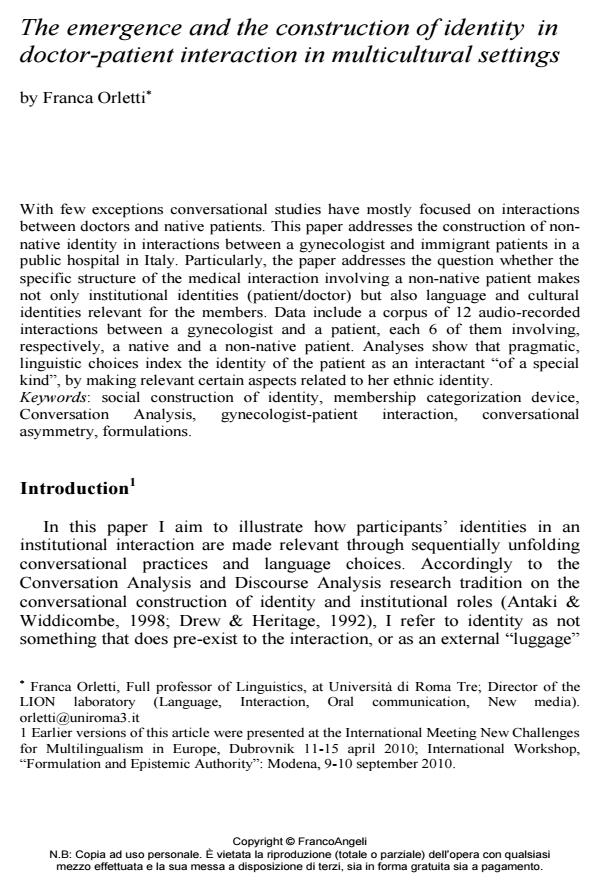The emergence and the construction of identity in doctor-patient interaction in multicultural settings
Titolo Rivista SALUTE E SOCIETÀ
Autori/Curatori Franca Orletti
Anno di pubblicazione 2013 Fascicolo 2013/1EN
Lingua Inglese Numero pagine 15 P. 67-81 Dimensione file 247 KB
DOI 10.3280/SES2013-001006EN
Il DOI è il codice a barre della proprietà intellettuale: per saperne di più
clicca qui
Qui sotto puoi vedere in anteprima la prima pagina di questo articolo.
Se questo articolo ti interessa, lo puoi acquistare (e scaricare in formato pdf) seguendo le facili indicazioni per acquistare il download credit. Acquista Download Credits per scaricare questo Articolo in formato PDF

FrancoAngeli è membro della Publishers International Linking Association, Inc (PILA)associazione indipendente e non profit per facilitare (attraverso i servizi tecnologici implementati da CrossRef.org) l’accesso degli studiosi ai contenuti digitali nelle pubblicazioni professionali e scientifiche
With few exceptions conversational studies have mostly focused on interactions between doctors and native patients. This paper addresses the construction of nonnative identity in interactions between a gynecologist and immigrant patients in a public hospital in Italy. Particularly, the paper addresses the question whether the specific structure of the medical interaction involving a non-native patient makes not only institutional identities (patient/doctor) but also language and cultural identities relevant for the members. Data include a corpus of 12 audio-recorded interactions between a gynecologist and a patient, each 6 of them involving, respectively, a native and a non-native patient. Analyses show that pragmatic, linguistic choices index the identity of the patient as an interactant "of a special kind", by making relevant certain aspects related to her ethnic identity.
Parole chiave:Social construction of identity, membership categorization device, Conversation Analysis, gynecologist-patient interaction, conversational asymmetry, formulations
Franca Orletti, The emergence and the construction of identity in doctor-patient interaction in multicultural settings in "SALUTE E SOCIETÀ" 1EN/2013, pp 67-81, DOI: 10.3280/SES2013-001006EN